Three Reasons to Visit the Croatian Adriatic Coast in September
June 26, 2022 - Summer has just arrived and in what could be called the first year back to normal since the pandemic began, and the country is preparing for a big wave of tourism in the next two months. But have you thought about September as the ideal time to visit the Croatian Adriatic coast? Here are three reasons you should.
Ferries everywhere, parties along the coast, film and music festivals, Instagrammable landscapes, and much more. There is no better time to visit the Croatian Adriatic coast than in the height of summer... or is there?
It is not a secret that many seek to anticipate the high season, or wait a bit for it to pass. Before the pandemic began, months like May, June, September, or October attracted many tourists from abroad and there was no shortage of flights arriving at Croatian airports. Unfortunately, the situation in recent years has forced many to focus their efforts on July and August, due to the uncertainty caused by travel restrictions in Europe.
However, it is almost impossible to deny that the situation seems to have finally reversed. After two difficult years, travel restrictions to Croatia are almost non-existent. Although the current Russian invasion of Ukraine has also generated a great deal of uncertainty for companies linked to tourism, as well as for tourists themselves, the Ukrainian resistance and the progressive retreat of the Russian invasion seem to offer a more positive outlook.
If you don't feel like visiting the Croatian Adriatic coast in the high season or you're still not sure when to book your tickets and accommodation, here are three reasons why you should consider September as a good month to travel to Croatia.
Fewer crowds
It is not an accident, nor a miscalculation. Not a single space to lie on the beach, you have to wait to walk through the narrow streets in the old towns, no tables available at restaurants, sold-out tickets for ferries... July and August are crowded months all over the Croatian Adriatic coast, and for many, this is not very pleasant. In September, however, you will notice how the beaches begin to empty and the number of tourists in the coastal cities and on the islands begins to decline week after week.
Many returning to work, young people preparing to go back to university, and the little ones are back at school... the holidays are over! And this is where yours begin, without crowds.

Photo: Mario Romulić
Hot, but not too hot
By the time this article was written, weather forecasts anticipate temperatures above 33 degrees for the last week of June. Although there is a heat wave that will hit much of the region, temperatures between July and August on the coast average between 29 and 32 degrees, and do not drop below 24 degrees at night. This may not be so bad for some, such as those who come from cold or sea-less countries, as they can take full advantage of the freshness of the Adriatic Sea.
However, there are others who can feel really hit by the strong heat, and it is totally valid to avoid places with very high temperatures, as it can be even dangerous. In September, the weather is still very pleasant to take a dip in the sea and there is even no need to bundle up at night, because during the day the maximum temperature averages between 25 and 26 degrees, while at night it can drop to 18 degrees. And not only is it good to go to the beach without fear of burning, but September is also a good month to visit the National Parks without a crushing sun to stop you.
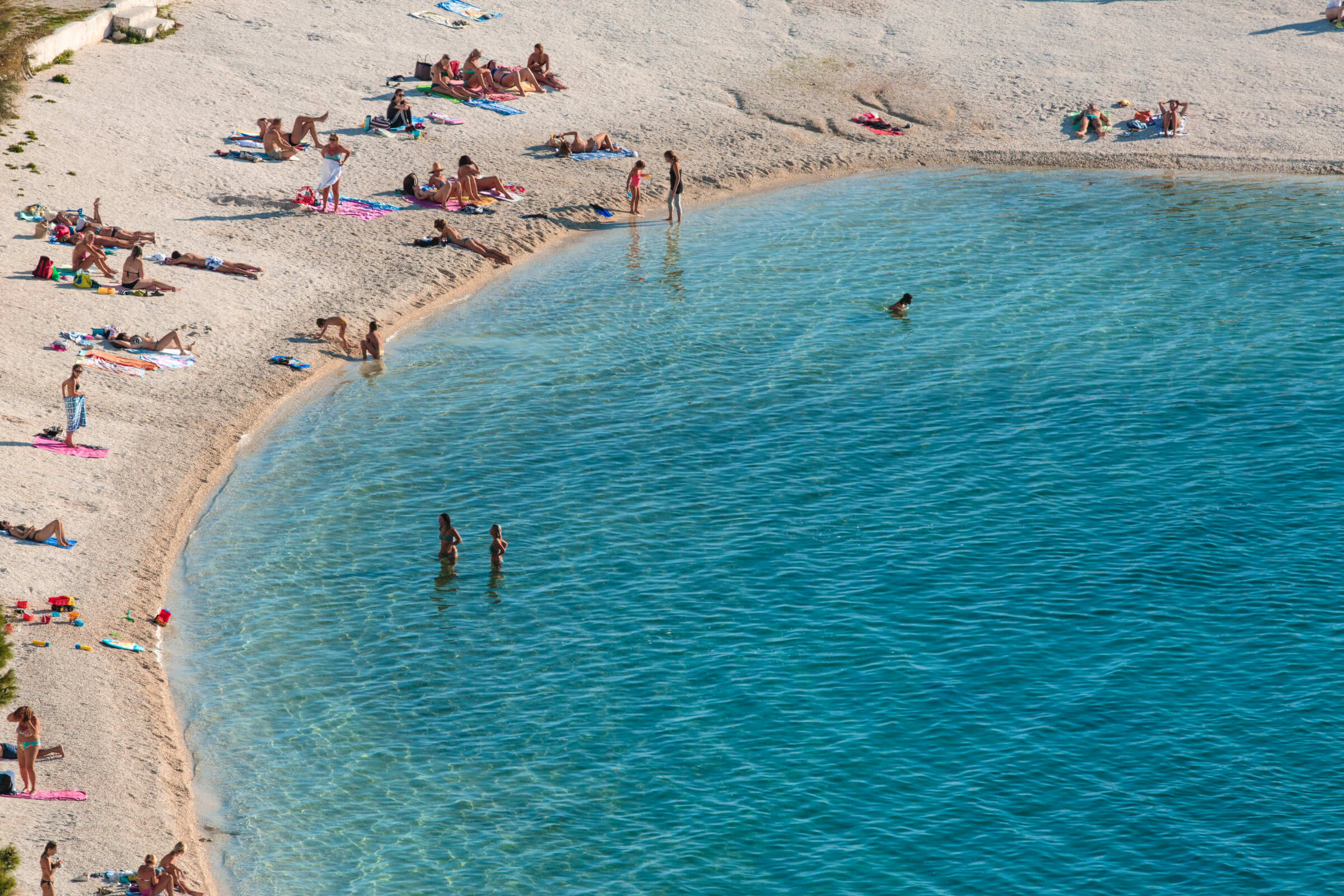
Photo: Mario Romulić
Budget-friendly
Perhaps the first two can be reasons that one can anticipate, but when it comes to prices between July and August, things can be very unnerving. Landlords raising their prices at the last minute, taxi drivers charging fortunes from here to there, or tickets to certain places of interest at an exorbitant cost, visiting Croatia in the high season can give one goosebumps when it's time to do the maths. Some say it's fair, others say it's scandalous, but the truth is that many will raise their eyebrows after seeing the prices of accommodation, ferry tickets, or the taxi meter.
You can already see the prices in September, and the difference is noticeable almost immediately. While they are not as low as in April or October, when you consider that there will be fewer crowds and the weather will still be spectacular, prices in September are surely a bargain.
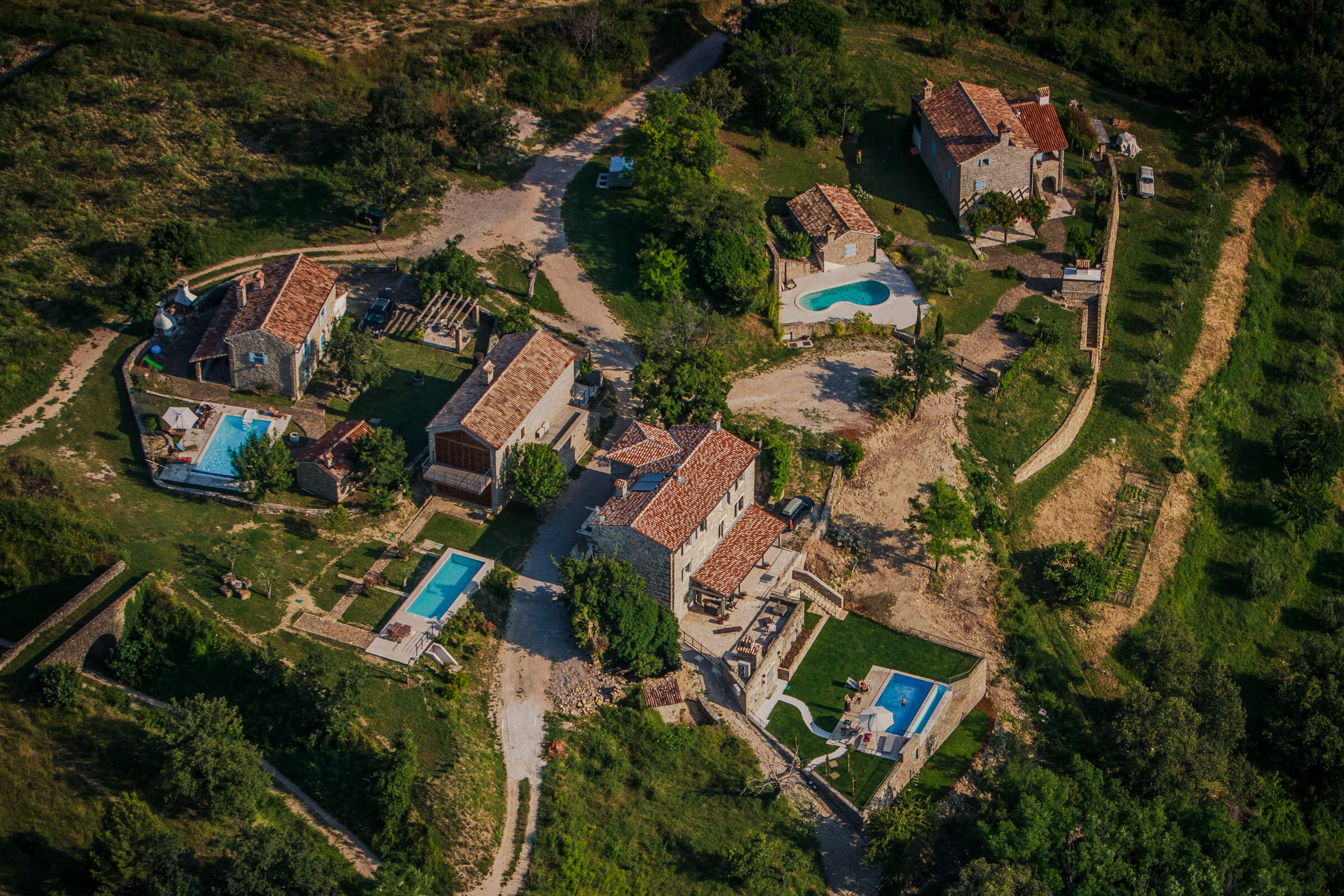
Photo: Mario Romulić
For more on travel in Croatia, follow TCN's dedicated page.
Russian Music Television Crew Visiting Two Croatian Adriatic Counties
ZAGREB, 19 July 2021 - A Russian MUZ TV music channel crew is visiting Split-Dalmatia and Šibenik-Knin counties until 23 July to film a special program on tourist experience and attractions in the two Adriatic regions, the Croatian Tourism Board (HTZ) said on Monday.
The visit was organized by the HTZ with the support of the tourism boards of the two counties. The Russian crew will visit Split, Šibenik, Omiš, Mount Biokovo, Brač island, Kornati National Park, Krka National Park and Skradin.
The footage will be shown in the Independent Traveller (Otpusk bez putevki) show, which is watched by more than two million people per episode. The program will also be available on MUZ TV's YouTube channel, the HTZ said.
For more on travel in Croatia, follow TCN's dedicated page.
Adriatic Counties To Be Removed From Slovenian Red List
June 11, 2021 - Good news after it was established yesterday that Slovenian tourists would not need to go into self-isolation when returning from the Adriatic counties, according to the decision of the Slovenian Government to remove the Croatian coast from its red list, which will take effect from tomorrow.
At yesterday's session, the Slovenian Government decided that the Adriatic Croatia administrative unit is no longer on their red list. The counties of Istria, Primorje-Gorski Kotar, Lika-Senj, Zadar, Šibenik-Knin, Split-Dalmatia, and Dubrovnik-Neretva were thus removed from the list of countries and areas with a high risk of coronavirus infection, reports hrturizam.hr.
Namely, in areas not on the dark red or red list, there is no high risk of SARS-CoV-2 infection, so a person coming from such an area can enter Slovenia without being sent into mandatory self-isolation if they submit proof that they've been in the area.
Apart from Croatia, Switzerland, the Vatican, the Austrian administrative unit of Tyrol, Cyprus, the Czech Republic, Luxembourg, Germany, Poland, Slovakia, and the Portuguese Azores were removed from the red list of European Union countries at yesterday's session. Bosnia and Herzegovina, Serbia, and Montenegro are no longer on the same list comprised of third countries. The administrative units of Pannonian Croatia, the City of Zagreb, and Northern Croatia are still on the red list. This means that a person coming from these areas in Croatia is quarantined for ten days due to possible infection with the SARS-CoV-2 virus upon returning to Slovenia
The decision to remove the Adriatic counties from their red list, made by the Slovenian Government yesterday, will take effect on Saturday, June 12th.
For all you need to know about coronavirus specific to Croatia, including travel, border, and quarantine rules, as well as the locations of testing centers and vaccination points across the country, make sure to bookmark our dedicated COVID-19 section and choose your preferred language.
Follow the latest travel updates and COVID-19 news from Croatia HERE.
For more on travel in Croatia, follow TCN's dedicated page.
Croatian Couple Set Off on 1,100 km Via Adriatica Trail to Promote Croatian Beauty
January 22, 2021 – As a New Year's resolution, the Croatian couple decided to set off on one of the longest and most demanding mountaineering ventures in Croatia – the Via Adriatica trail. Starting at Prevlaka, this is their 21st day of walking towards Cape Kamenjak in Istria. Delighted by Croatia's views and the hospitality of the people they met along the way, Josipa and Matija happily make their way through the first long-distance trail in Croatia.
The Via Adriatica trail combines existing hiking trails, forest roads, macadam, and roads in a total of 1,100 kilometers with 41,000 meters of altitude difference. The trail connects Croatia's most beautiful mountain massifs, peaks, and landscapes, stretching from the Istrian peninsula across the Croatian mountain threshold all the way to the Prevlaka peninsula.
As its name suggests, it connects the most attractive Croatian mountain massifs, peaks, and regions along the Adriatic coast. It passes through three national parks, three nature parks, six significant landscapes, three special reserves, and many protected areas.
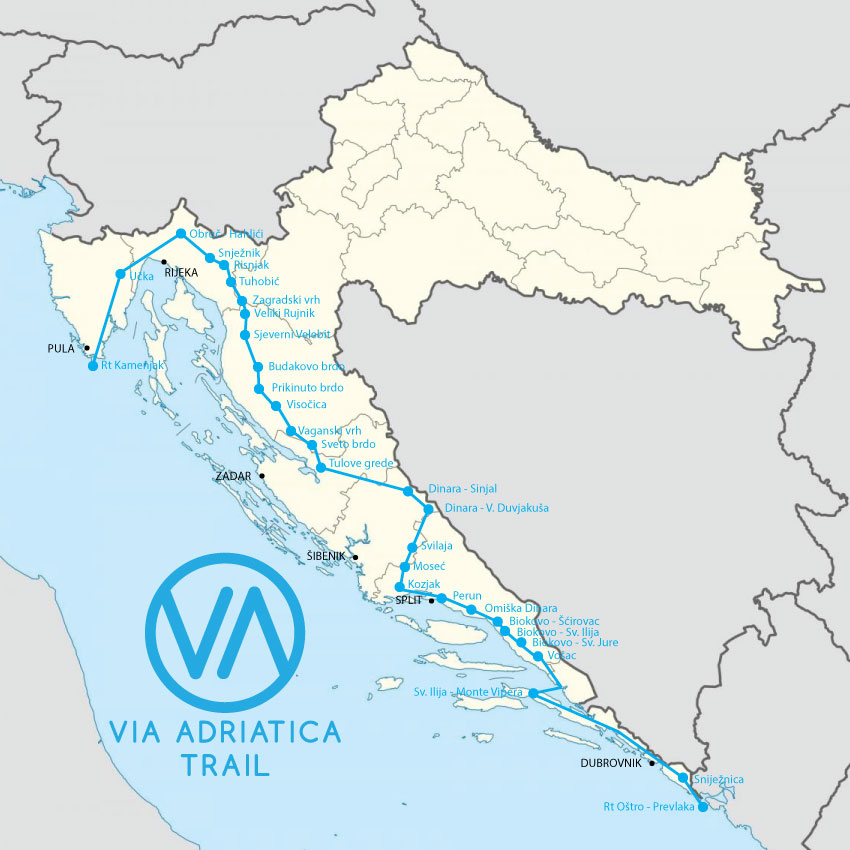
Via Adriatica trail
If we go in concrete figures, Via Adriatica goes along 14 mountains, 12 rivers, two lakes, 18 protected areas, seven counties, and 52 municipalities. What makes this trail attractive and popular among Croatian and foreign hikers are the sea and island views wherever it is possible.
Josipa and Matija, a young romantic couple from Croatia, are now on the way to Svilaja, a mountain in the Dalmatian hinterland. Although sighing from the constant walking with heavy backpacks on their backs, they tell their story of how, when, and why they decided to head to this fantastic Croatian long-distance trail right now, in January.
'We got in the car and left'
Both Josipa and Matija are natives of Karlovac and hiking enthusiasts, chasing each their careers, which allowed them two months of a completely new mountaineering experience due to a combination of circumstances. Josipa (27) has a master's degree in economics, works as a reception manager in one Zagreb hotel, while Matija (25) runs his own business in an adventure travel agency in Karlovac.
In mid-November last year, they discussed what they would do in January and February since there is not much in Zagreb hotels at that time of the year. When Matija was banned from working on December 1, they decided to go on the Via Adriatica trail to promote Croatia, its beauties, Matija's company, but also – themselves.

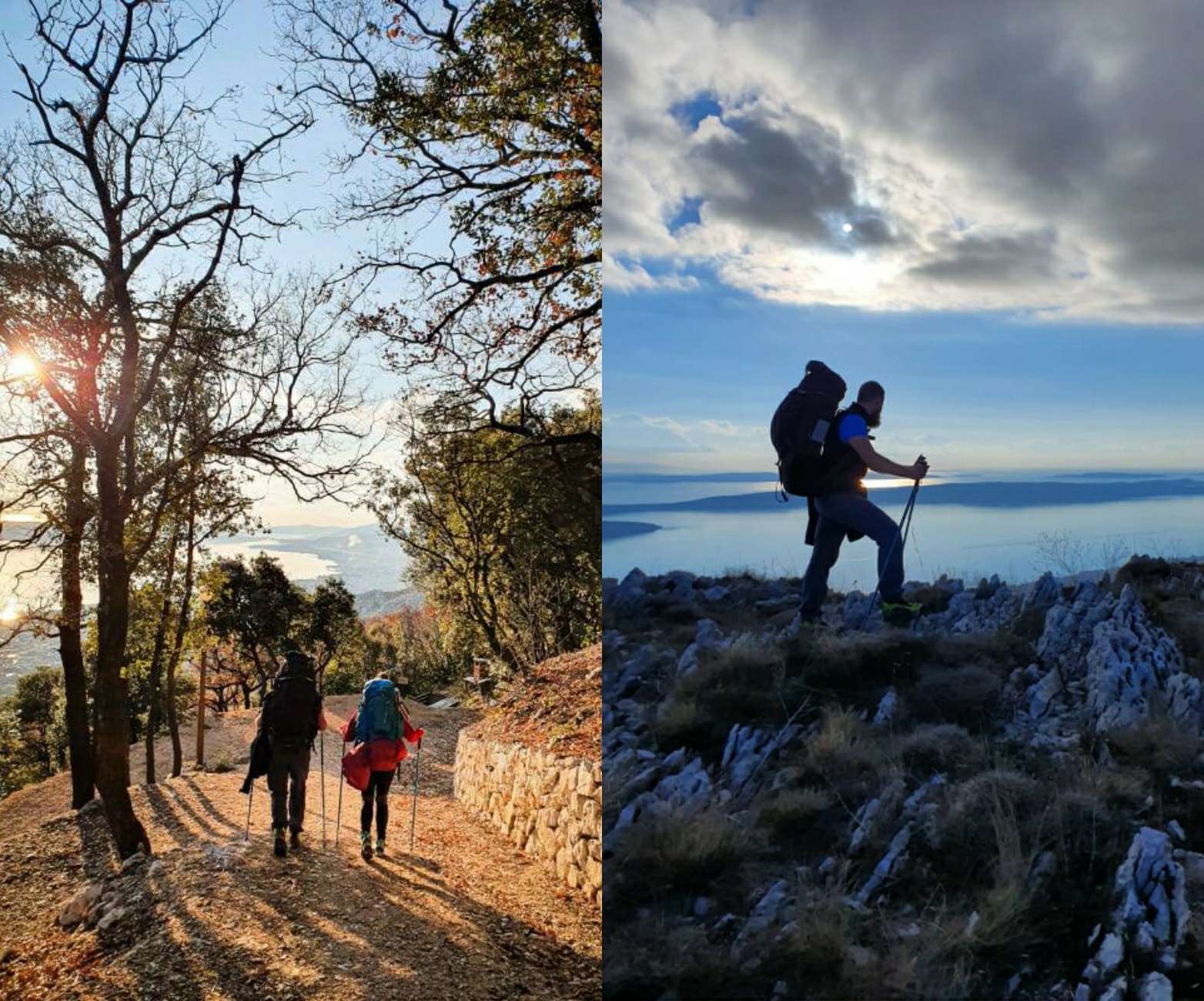
Josipa and Matija, Kozjak mountain
"We have time until the end of February, but we took more time than the average time needed to pass Via Adriatica because we took into account winter and unforeseen circumstances. We already know that we will have to take a three-day break this week due to heavy rain and stormy jugo wind," Matija told the Dalmacija danas portal, which caught up with them in Žrnovnica. They were hosted by the Association Žrvanj, which makes its premises available to all hikers who decide to cross the entire Via Adriatica.
For Josipa, as she says, Via Adriatica was a great idea, but it never crossed her mind to set off on this, not at all simple, but beautiful trail. However, she took advantage of this unique opportunity and, together with her beloved Matija, a member of the Croatian Mountain Rescue Service (HGSS), set off on an adventure.
"In December, we didn't know if we were going to leave or not. There was quarantine, bans, passes. Until the last three days, we didn't know if we were going. Then the earthquake happened, and again it was a question of whether I would go to the rescue or not. Given the time invested in preparation and all the equipment, we said we were going. We got in the car and left," says Matija.
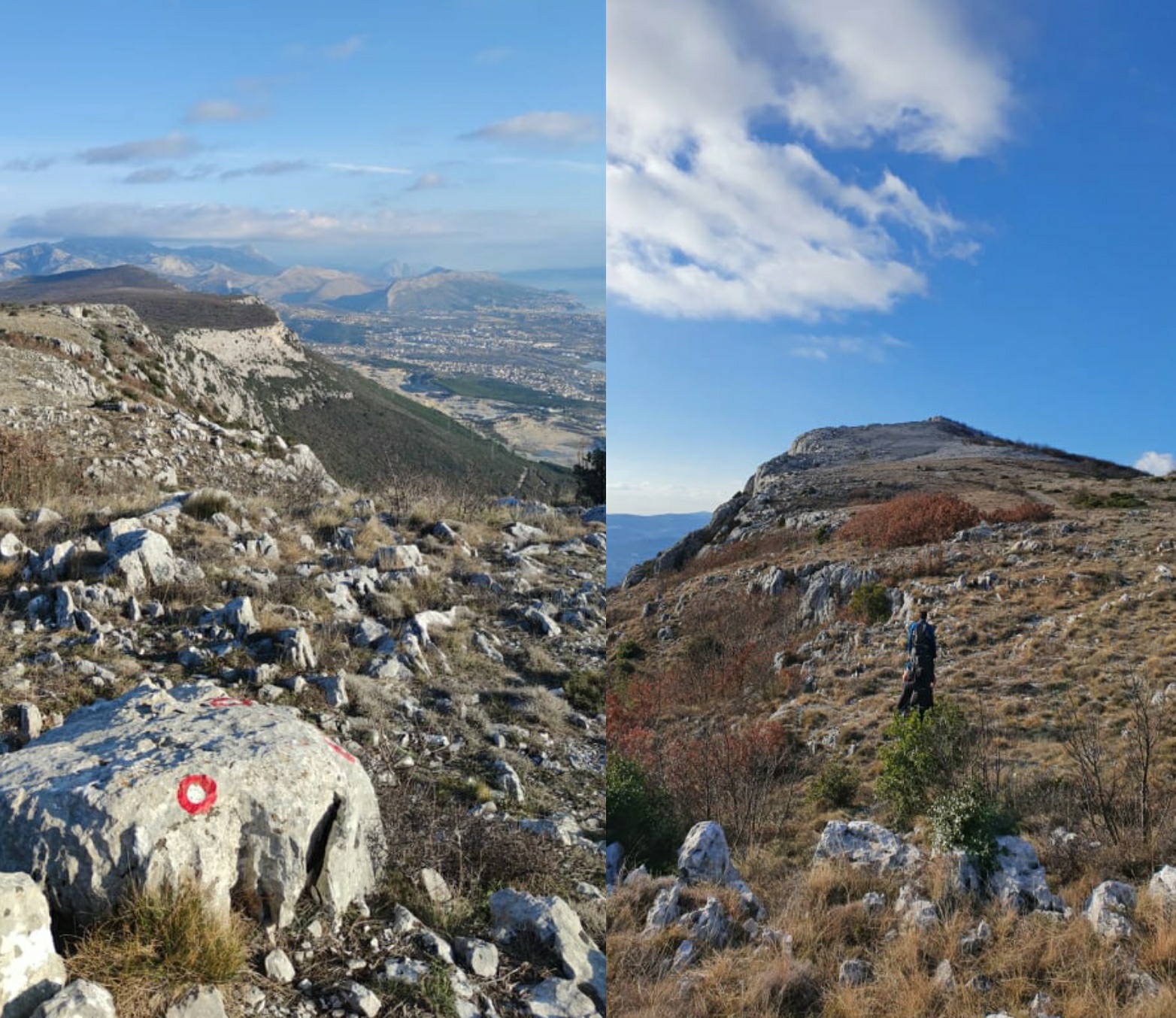
Kozjak mountain
'People make the whole trail special'
Although Via Adriatica starts in Cape Kamenjak in Istria, Josipa and Matija decided to start from the last destination in Prevlaka, to be closer to home in Karlovac at the end of the trail.
"The idea was to be in Dalmatia for the first few weeks, while we have supplies of food and then start getting closer to home. It's more natural to get closer to home than the other way around. We celebrated the New Year, and in the morning, we left Prevlaka," says Josipa.
"The first two or three Via Adriatica's sections are quite flat. When you walk on the flat for a long time, you get bored. Pelješac is beautiful, the view from Sveti Ilija, the highest peak of the Pelješac peninsula, is magnificent, but it takes so long to get there! We only reached the 'real' mountains after Pelješac – Biokovo, Omiška Dinara… Perun has beautiful views," says Matija, emphasizing that the most beautiful parts of the trail are – the people.

On the fifth section, Josip and Matija had good company - members of a mountaineering association
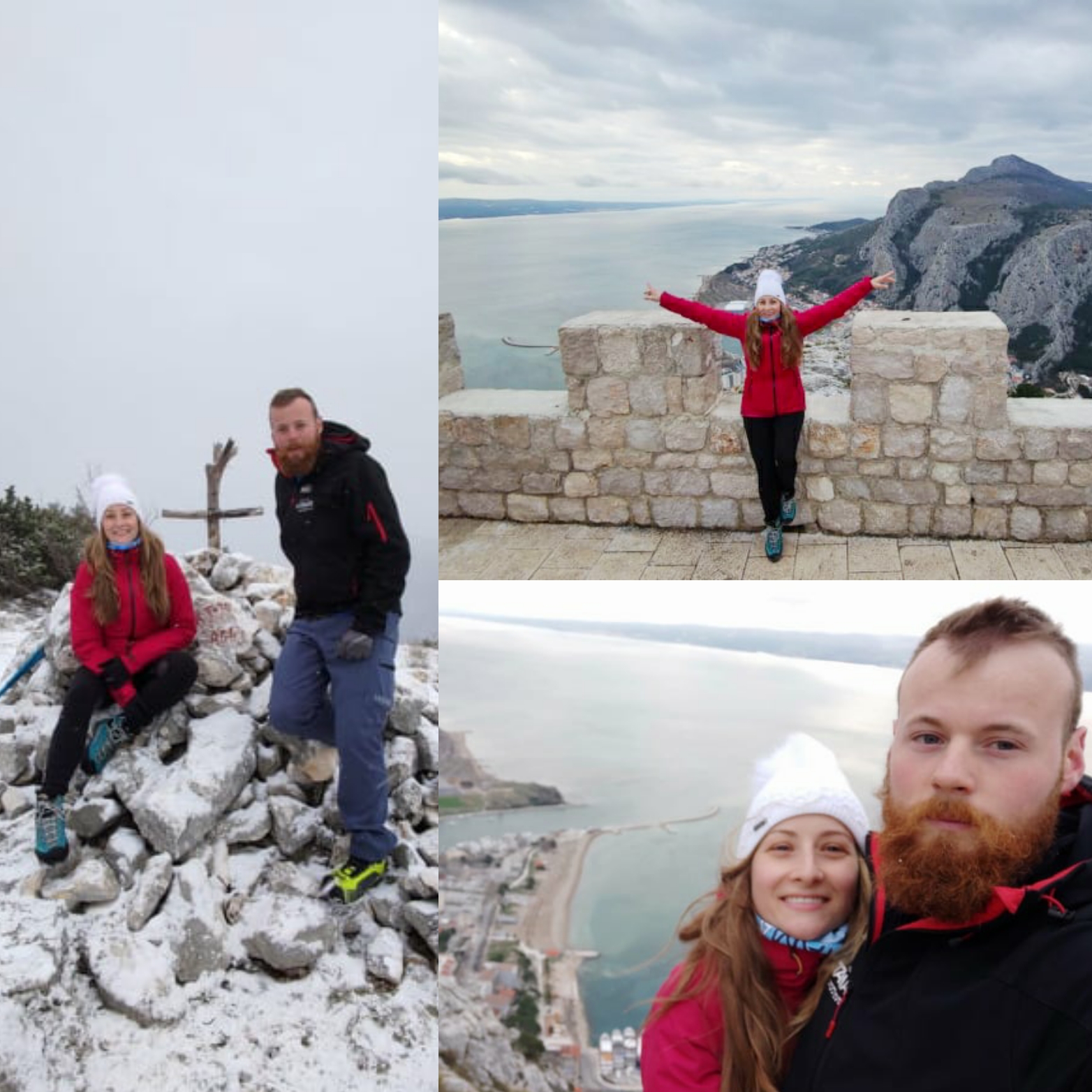
Josipa and Matija at Omiška Dinara
"People make the whole trail special. People selflessly give you their home, food, hospitality. There is no doubt that this path would be five times harder if people did not help. It wouldn't be impossible, but it would be a lot harder. If we had to sleep in the winter in a tent every night, it would not be easy. This way, when you know that warm accommodation awaits you in the evening, you are mentally better prepared. People feed us and take care of us," says Matija.
As they talk to us, they are on the sixth section of Via Adriatica, out of 13. Another 600 kilometers is still in front of them, but they are satisfied with their pace. With a laugh, Josipa says they are breaking through the thorns.
Best views they've ever seen
Before Via Adriatica, they visited Biokovo several times, but always during summer when everything is "stone and heat." They experienced it for the first time in the winter, and they say it was impressive.
"We imagined Biokovo white with huge vastness. And it greeted us exactly like that; icy, white. The weather was perfect; the snow was perfect for walking. We walked in crampons because everything was frozen. Although it was icy and cold, it was sunny, like in a movie. It was snowing on the Omiš Dinara, the large snowflakes falling," describes Josipa.

Snowy Biokovo

View from Biokovo
Then followed Perun or Poljička mountain. Perun, says Matija, is not Biokovo, but it has its charms.
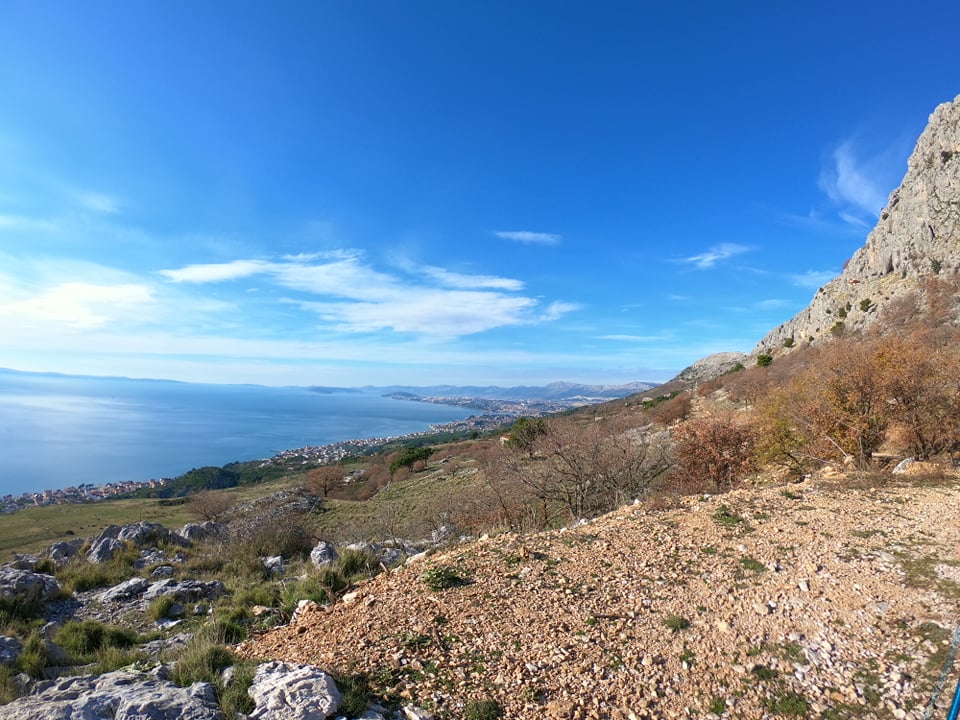


Capturing beautiful moments on their way to Perun
"From Omiš, you go a little towards the village of Gata, so the ascent to the chapels begins, and then descends to the seaside, which is beautiful, with a view of the islands. The moment when Split appears in front of you is especially impressive. So far, I've seen Split from all sides, even from a helicopter, but this is the best view of Split I have ever seen. Brutal," says Matija.
The northern part of Dalmatia - the Dinara mountain, the Lika region, and Velebit mountain - are still waiting for them. The journey is challenging but also exciting.
"Dinara and Velebit are our next challenges. Dinara is quite laid, and I think it will be relatively easy. We know it will all be covered in snow. On Velebit, Vaganski Vrh and Sveto Brdo, two highest Velebit peaks can be quite tricky, especially if those huge cliffs freeze," says Matija, but points out that they are well prepared.
Good equipment is the key
So far, they have not even used all the equipment they brought with them, and they were at a temperature of -15 degrees Celsius with a strong wind. They have high-altitude hiking boots, sleeping bags that can withstand -20 degrees. They also have a real expeditionary Himalayan tent for two, weighing a little less than 4 kilos, wind-resistant over 150 km / h.
"We mostly relied on obtaining quality and safety equipment. Since we travel in the winter, we needed good winter equipment that can withstand low temperatures. I think we did our best in researching for good equipment. We have quality equipment, and we are ready to sleep in winter conditions," says Josipa.
She doesn't check her phone very often, and the signal is lost every now and then, so it's harder to communicate. However, that doesn't bother them – they have each other.

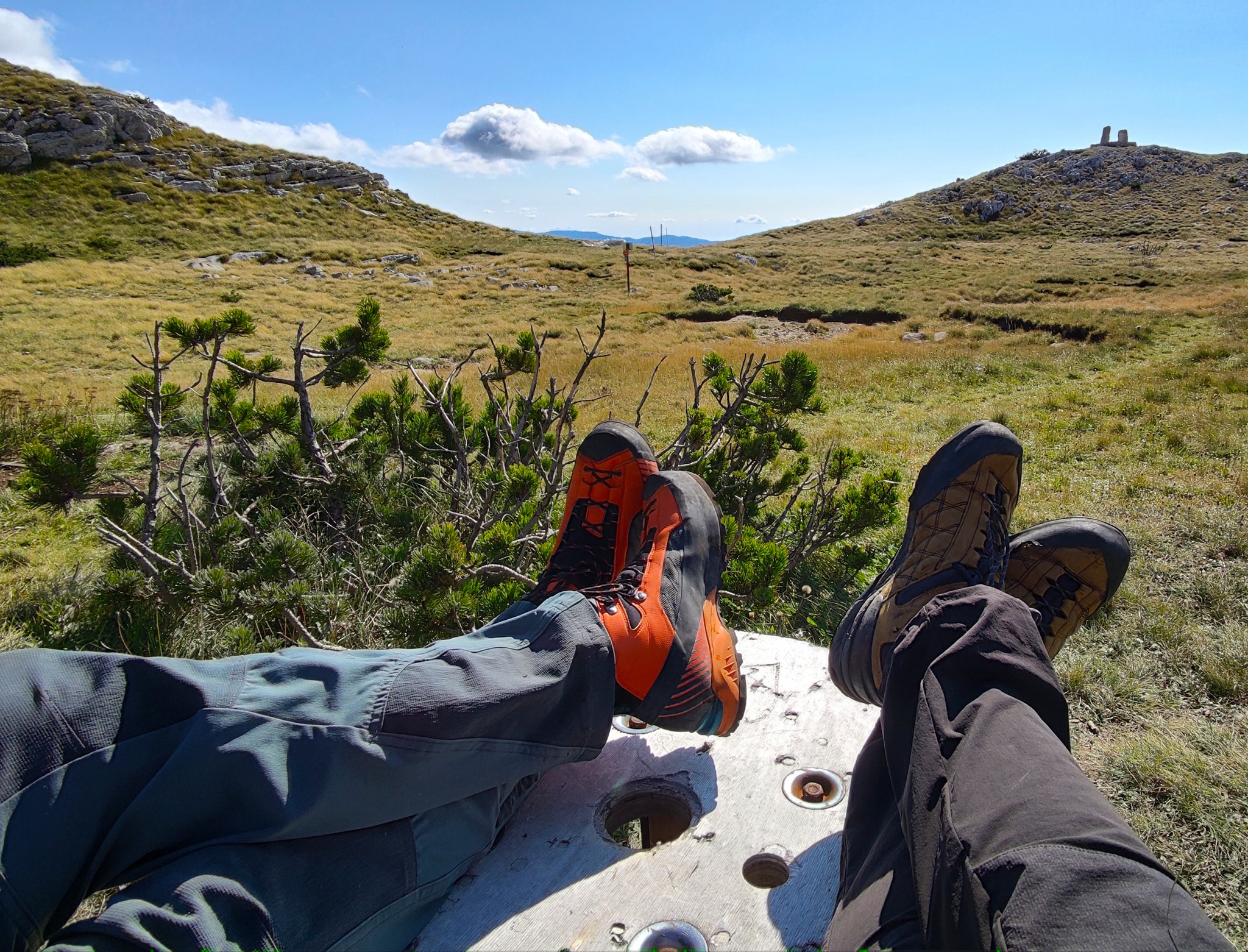
Josipa and Matija
When asked how much it took them physically to prepare for such an endeavor, they say that they are in the mountains every weekend and spend all their spare time in the mountains, so they do not physically prepare too much.
"As for mountaineering life, we are very active. We crossed both easier and harder climbs, both in summer and winter, so we are well prepared. And mentally... I don't think you can mentally prepare for that until you face the path itself. You have some idea what it might look like, but until you find yourself there, you don't know," says Josipa.
Prepare, don't rush, and enjoy the fantastic scenes
And that hiking is becoming a popular hobby in these new circumstances is confirmed by the story of Marin Zovko, who, combining Via Adriatica with the Croatia Long Distance trail, recently walked the whole of Croatia in just 100 days. He decided to embark on his adventure alone and later admitted that loneliness had fallen hardest on him.
Josipa and Matija, more or less, always hike together and often mountaineer in larger groups since they are active members of the mountaineering society. Apart from the company that the hiking companions provide, Josipa says that it is good to hike in the company for safety reasons.
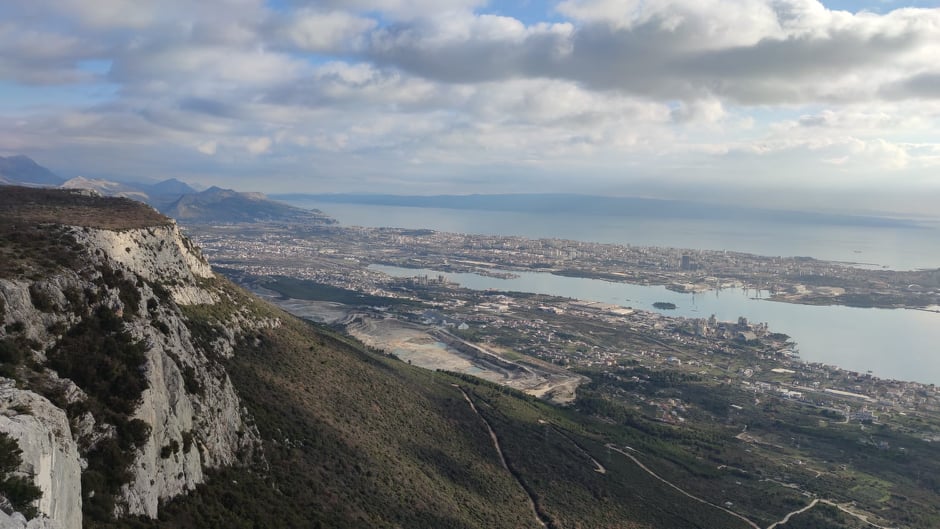
View from Kozjak
"Honestly, I would never dare to undertake such an endeavor alone. Matija knows a lot about the mountains, and since he is a member of the HGSS, we are in safe hands," says Josipa happily.
They recommend people to enjoy the trail, not to rush, but to prepare.
"It takes a lot of courage and a lot of madness to set out on a journey like this, but the trail takes back everything a hundredfold. We watch amazing scenes, and we get to know our country even better. Whoever is interested in something like this, I would recommend it from the bottom of my heart, "says Josipa.
We now let them continue their journey in peace, enjoying all the natural beauties surrounding them because they are quite exhausted due to the Via Adriatica venture's daily demands.
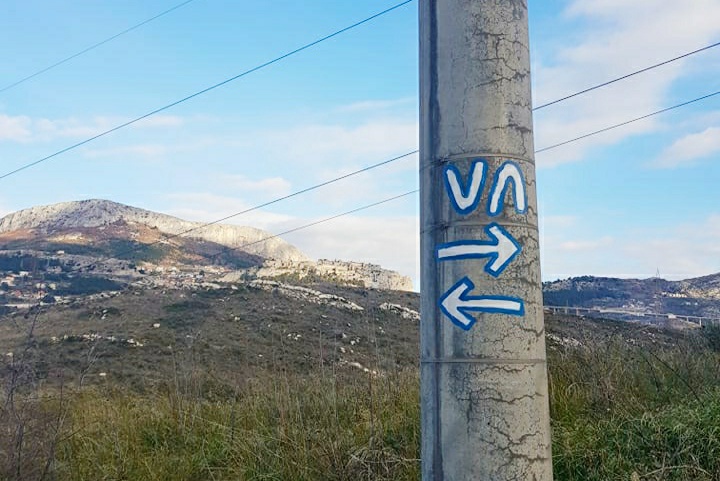
All the photos are from interlocutors' private archives.
To follow more news from their Via Adriatica adventure, you can find them on Facebook.
For the latest travel info, bookmark our main travel info article, which is updated daily.
Read the Croatian Travel Update in your language - now available in 24 languages.
VIDEO: Huge Whale Visits Croatia - This Summer's Second Sizeable Visitor
Tuesday, 8 September 2020 – Beyonce and Jay Z might be the biggest stars to visit Croatia this summer, but they're certainly not the biggest in size. In this stunning video, a huge whale visits Croatia
Croatia is never short of celebrity guests. This summer alone, the country's Adriatic shores and islands have been visited by Owen Wilson, Beyonce and Jay Z, and Lepa Brena and Lily Allen. But, such stars are dwarfed in comparison to the latest visitor.
A huge whale visits Croatia this week and its movements have been captured spectacularly by drone footage. In the video from the Blue World Institute, you can see the epic creature side-by-side with a fishing vessel. The boat is not small, yet it looks tiny next to this beast.
Video: A huge whale visits Croatia © Blue World Institute
Shots of this huge whale visits Croatia were taken by drone above the Velebit Channel in Dalmatia. It is not the first visitor of its kind this year. Earlier in the summer, the same Blue World Institute managed to grab some footage of a fin whale in the Adriatic (pictured below). Only last time, they didn't have their drone.
© Blue World Institute
The video was taken by the researchers on Saturday 5 September at the entrance to Novsko ždrilo. They followed the whale for about two hours, up to the Maslenica bridge where he turned back into the Velebit Channel and swam in the direction of Vinjerac.
The researchers took the video of this huge whale visits Croatia to analyze the size and health of the mammal. The footage allowed the researchers to determine that this was not the same animal they filmed in the same area in mid-August. When the whale swam close to their boat, researchers managed to obtain a small skin sample in order to perform a biopsy. They monitored the whale's progress and saw it again on the morning of Sunday 6 September, north of Novsko ždrilo.
For the latest travel info, bookmark our main travel info article, which is updated daily.
Read the Croatian Travel Update in your language - now available in 24 languages
89 Young Griffon Vultures On Kvarner Archipelago Grow Feathers
ZAGREB, Sept 6, 2020 - The Kvarner archipelago, the only habitat for the Griffon Vultures on the eastern Adriatic coast, currently has 125 pairs nested with 89 new fledglings, Nature pubic authority in Rijeka said on the occasion of International Vulture Awareness Day marked on September 1.
This year's monitoring activities of this strictly protected species revealed that their population on the Kvarner islands is stable and has even slightly increased.
Irena Juric, the head of Nature for Primorje-Gorski Kotar County, which manages the Griffon Vulture Recovery Centre in Beli on the northern Adriatic island of Cres, said that the center had recently received six young fledglings that would be cared for at the center until they were strong enough to be placed back in the wild, adding that this spring 10 fledglings saved last year had been released in the wild.
GPS transmitters have revealed that several birds have remained in the Kvarner region while others have migrated to the Pyrenees on the French-Spanish border or south to Albania.
In Croatia, griffon vultures nest only on the Kvarner islands of Cres, Krk, Plavnik, and Prvic. The closest colonies of these birds are in northern Italy and in the Uvac River canyon in Serbia.
At the end of 1969, it was decided to establish the Glavina ornithological reservation on the island of Krk. The reservation was the first of its kind in the world and was dedicated exclusively to protecting the Griffon Vulture.
Together with the partner organizations Zagreb Zoo, BIOM Association, City of Cres, Cres tourist board, and Tramuntana association, the Beli center seeks to raise awareness of the importance of protecting these birds and their way of life. This year an awareness program is being held at the center on Saturday and Sunday, September 5 and 6.
For the latest travel info, bookmark our main travel info article, which is updated daily.
Read the Croatian Travel Update in your language - now available in 24 languages
Croatian Electric HEP: New Solar Power Plants on Adriatic Coast
Renewable energy sources are increasingly being harnessed on the Croatian coast, where there is ample wind and sun. In addition to wind power plants, which are multiplying every year, the construction of solar power plants is also on the rise.
There is one plant in Istria, which became operational in 2018, and three more will produce electricity in early 2020: on the islands of Cres and Vis and near Vrlika according to Morski on November 26, 2019. With investments of HRK 80 million, Croatian Electric Company (HEP) will add four new power plants to their network with a total capacity of 11.6 megawatts (MW). In the long term, they plan to complete solar power projects with a total power of 350 MW by the end of 2030.
The Kaštelir solar power plant has a capacity of 1 MW and an expected annual production of about 1.5 million kWh, which will meet the electricity needs of about 500 households. The power plant is equipped with solar panels manufactured by the Solvis company in Varaždin. This plant has been operating since December 2018. It has a contract with HROTE (Croatian Energy Market Operator) as a preferred producer within their incentive system. Here is an aerial video of the plant.
The location permit for the Cres solar power plant was obtained in June 2018 and that plant is being developed by the County of Primorje-goranska. The location of SE Cres is about 2 kilometers north of the settlement Orlec on the island of Cres. The power plant is 6.5 MW with an expected production capacity of 8.5 million kWh per year, which will meet the electricity needs of about 2,500 households. The total value of the investment is HRK 41 million. Preparatory work on the site is underway and the power plant will begin operating in 2020. Here is a simulation of the Cres power plant.
The Vis solar power plant will be located on the hill of Grizova Glavica, near the village of Žena Glava, about 3.6 kilometers southwest of the town of Vis and about 4.8 kilometers east of Komiža. HEP purchased the project from Končar-Obnovlji izvori energie (Končar Renewable Energy). The expected annual output is 4.2 million kWh, which will meet the needs of about 1,400 households. This investment is valued at HRK 25.3 million. The power plant is under construction and is expected to be operational by February 2020.
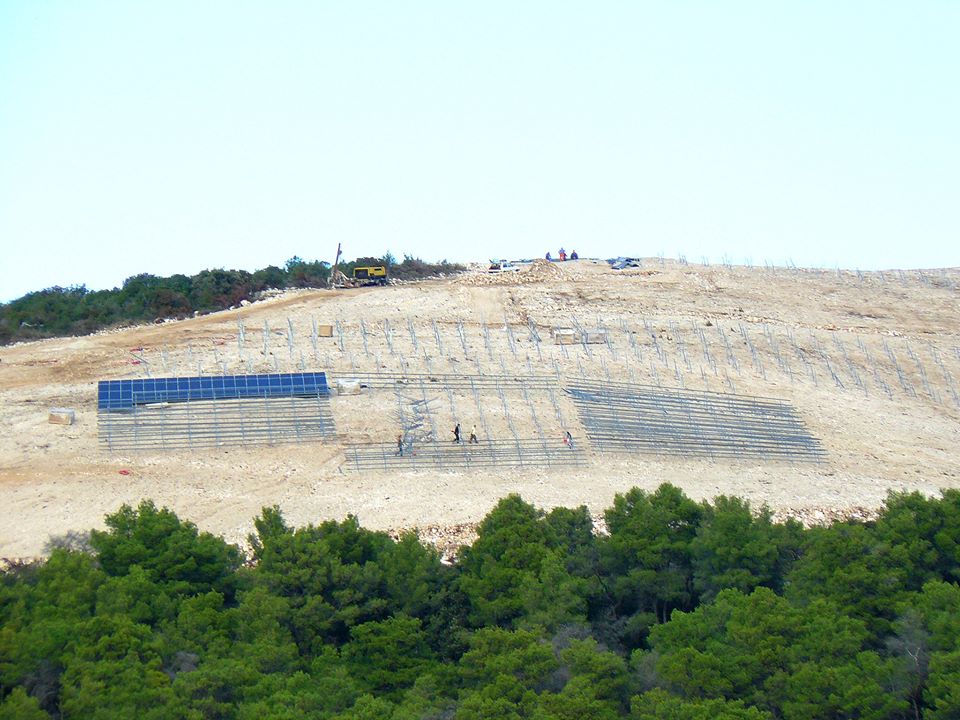
The Vrlika Jug solar power plant represents the completion of the first phase of planned construction in the southern part of the Kosora working zone in the town of Vrlika. The power plant will have 2.1 MW of power and an estimated annual output of about 2.9 million kWh. Construction will be completed in the first half of 2020, according to HEP.
For more information on HEP solar plant projects, check out their website here.
To keep updated on renewable energy projects in Croatia, follow our Business page here and our Lifestyle page here.
Record Heatwave on the Horizon? Adriatic Coast on Red Alert
August 12, 2019 - If you thought Sunday was hot on the Adriatic Coast, the worst is yet to come as the peak of summer brings brutal temperatures along for the ride.
Although the end of the meteorological summer is still a month and a half away, it looks like the two hottest days of this summer are right ahead, reports Dalmacija Danas.
On Sunday, some parts of Dalmatia measured uncomfortably high temperatures. For example, the highest daily air temperature in Knin was 39.3°C, Ploče and Resnik 38°C, and Zemunik 37°C.
However, the new week begins with a warning from DHMZ, who issued a red alert for the entire Adriatic due to the heat. Namely, this is the highest warning level within the MeteoAlarm system.
If the next two days will break temperature records remains to be seen, but we do know that you’ll want to park yourselves under the air conditioning for as long as you can.
Monday will be sweltering and muggy. The skies will be clear while the wind will be weak or completely absent. The minimum morning air temperatures will range from 18°C somewhere in Zagora (Inland Dalmatia) to 30°C somewhere along the coast. The highest daily temperatures will range from 33°C on the high seas to 40°C in Zagora.
Tuesday will be mostly clear, though the afternoon in Inland Dalmatia will see moderate to increased cloud development in some areas, with a slight chance of rain showers. It will be quiet or with a light breeze. The morning will be hot with maximum daily temperatures from 33 to 40°C.
A weakened weather front will bring only slightly more variable weather on Wednesday. It will be partly sunny, with occasional cloudy skies. In the second part of the day, there will be light showers with thunder, mostly in southern Dalmatia. There will be a light to moderate bura in the morning and evening and in the daytime, light winds of different directions. It will be a little fresher with maximum daily temperatures between 29 and 35°C.
On Thursday it will be partly sunny, with the occasional moderate clouds and dryness. There will be a light bura wind in the morning, and during the day, a light breeze from the west. The evening and morning are much more comfortable than in the previous days, with maximum daily temperatures between 27 and 32°C.
Friday, Saturday and Sunday will be mostly sunny and dry. The wind will be weaker; in the evenings bura, in the daytime maestral. The nights will be comfortable, with maximum daily temperatures from 27 to 32°C, and a little higher on Sunday.
You can follow updates from DHMZ here.
To read more about news in Croatia, follow TCN’s dedicated page.


